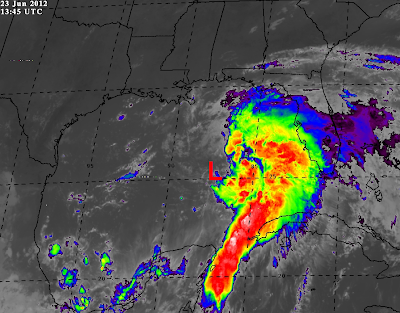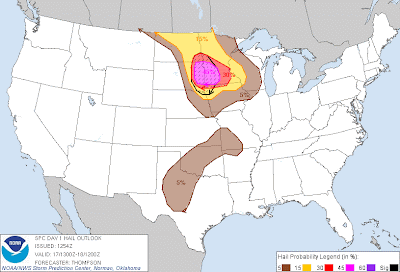The above radar loop (courtesy of the College of DuPage Nexlab), shows the progression of a severe "derecho" from the Midwest to the Ohio Valley, and all the way to the Mid-Atlantic Coast yesterday afternoon and evening.
A derecho is a severe windstorm that, by definition, produces damaging winds in excess of 60 mph along a swath of at least 240 miles in length. Radar signatures associated with a derecho often take on an arc or bow configuration, hence the term "bow echo", as is shown throughout most of the radar loop above.
Viewed from the ground, a large, arcing shelf cloud often flows out ahead of the strong winds, as captured by this impressive photo yesterday on the southeast side of Chicago (via twitter, unknown photographer):
A video was posted on YouTube showing another great perspective of the developing shelf cloud near Elk Grove Village, IL:
All in all, this particular derecho traveled a distance of over 700 miles in about a 10 hour period of time yesterday, producing widespread 70-80 mph wind gusts, with several reports of 90+ mph wind gusts at the peak of the event.
Wind damage was widespread, with trees and power lines being particularly hard hit. It has been reported that nearly 2 million people were without power at the peak of the storm. At one point, just over 1.2 million were without power in the Baltimore/D.C. area alone.
It often takes several weeks to clean up the damage after such an event, especially with the widespread amount of tree damage that appears to have taken place in this particular case.
Unfortunately, I've seen documentation of 10 deaths in association with this event so far (6 in Virginia, 2 in New Jersey, and 1 each in Maryland and Ohio). While specific details haven't been offered, serious injuries and/or deaths often take place in this situation as a result of falling trees and/or tree limbs or other wind driven debris. That's why it is always best to seek shelter indoors and stay away from windows during a strong wind storm. In fact, a derecho of this strength can cause just as much damage as a low end tornado, and I recommend treating the situation accordingly and taking tornado shelter precautions just to be safe.
For more information, including "live blogging" during rapidly changing weather events, please be sure to follow me on facebook and/or twitter:































